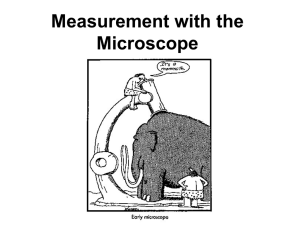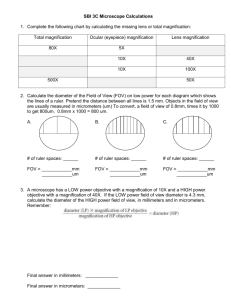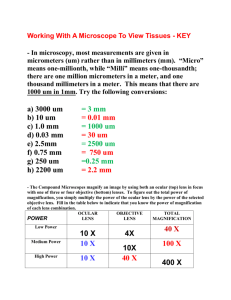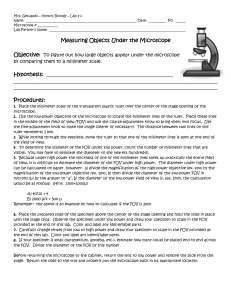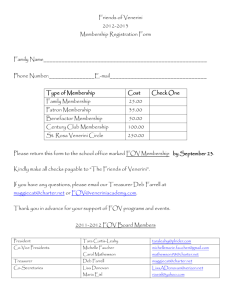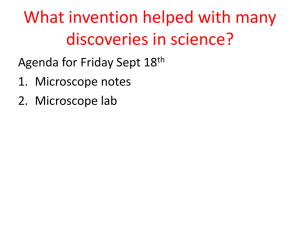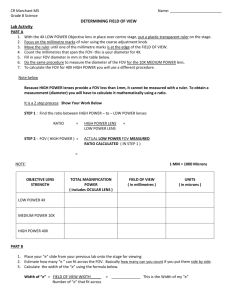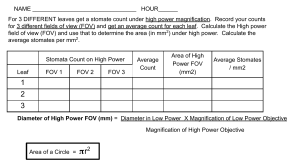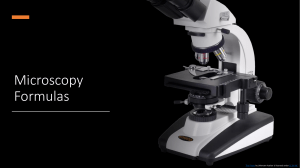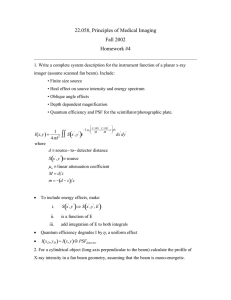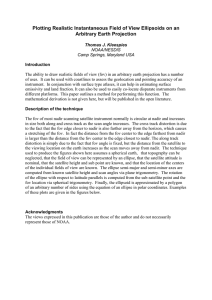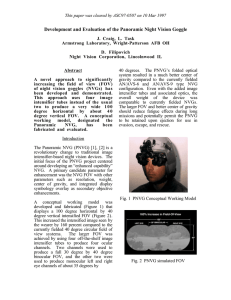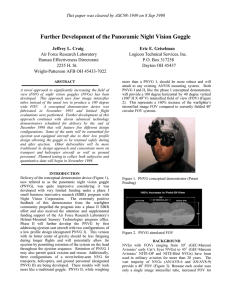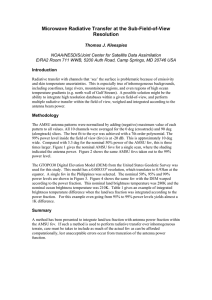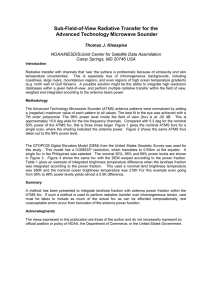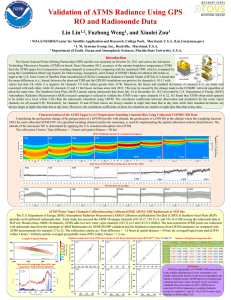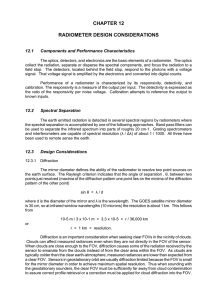Microscope WS Lab1 KEY - Mr. Lesiuk
advertisement
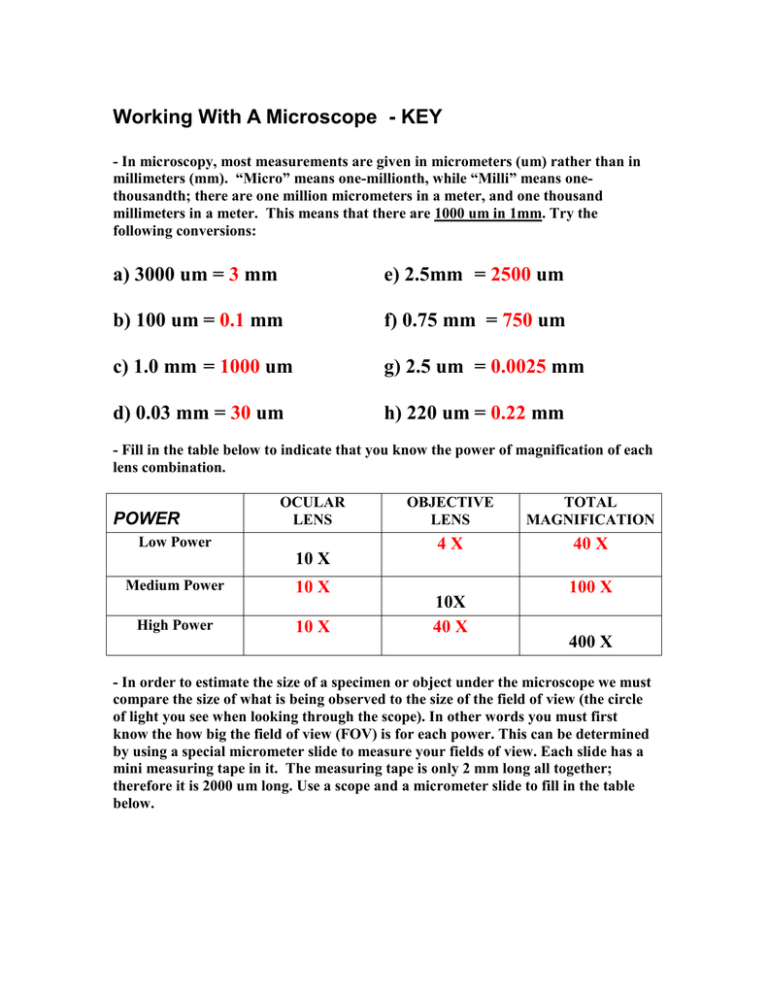
Working With A Microscope - KEY - In microscopy, most measurements are given in micrometers (um) rather than in millimeters (mm). “Micro” means one-millionth, while “Milli” means onethousandth; there are one million micrometers in a meter, and one thousand millimeters in a meter. This means that there are 1000 um in 1mm. Try the following conversions: a) 3000 um = 3 mm e) 2.5mm = 2500 um b) 100 um = 0.1 mm f) 0.75 mm = 750 um c) 1.0 mm = 1000 um g) 2.5 um = 0.0025 mm d) 0.03 mm = 30 um h) 220 um = 0.22 mm - Fill in the table below to indicate that you know the power of magnification of each lens combination. POWER OCULAR LENS Low Power 10 X Medium Power High Power 10 X 10 X OBJECTIVE LENS TOTAL MAGNIFICATION 4X 40 X 10X 40 X 100 X 400 X - In order to estimate the size of a specimen or object under the microscope we must compare the size of what is being observed to the size of the field of view (the circle of light you see when looking through the scope). In other words you must first know the how big the field of view (FOV) is for each power. This can be determined by using a special micrometer slide to measure your fields of view. Each slide has a mini measuring tape in it. The measuring tape is only 2 mm long all together; therefore it is 2000 um long. Use a scope and a micrometer slide to fill in the table below. Power Low Power Medium Power High Power Total Magnification Field of View (mm) Field of View (um) 40 x 100 x 400 x 4.4 1.8 0.44 4400 1800 440 Observations : 1. Use a “letter e slide” to investigate what happens to an image when it passes through a microscope. Other than looking bigger, how does the image of the letter “e” differ when looking through the scope? - The letter "e" is now upside down and right/left are flipped. 2.When viewing the “letter e” on low power use the mechanical stage to move the slide to the right of your stage. Which direction does the “e” move in your field of view? - It moves to the LEFT of my field of view. 3.When viewing the “letter e” on low power use the mechanical stage to move the slide upward to the front of your stage. Which direction does the “e” move in your field of view? - It moves DOWNWARD in the F.O.V. - The next step is to estimate the size of the specimen relative to the size of the FOV. For example, if a specimen’s length is to be estimated, you just estimate how many of that specimen can fit across that field of view. Then divide that number into your field of view. For example if you are viewing an amoeba on medium power (FOV = 1800 um) and 3.5 of them could fit across the diameter of your field of view then you use the following equation: Estimated Size = F.O.V # that fit across Say that approximately 3.5 fit across. *** In this case the estimated size = 1800 um 3.5 The amoeba is estimated to be 514.3 um long. - Use the diagrams below and the stated FOV’s to estimate the length of each specimen. Show your calculation beside each. A) Calculation : FOV = 1800 um Say approximately 8 fit across the FOV Approximate Size = 225 um Viewed on medium power : 100 X B) Calculation : FOV = 440 um Say approximately 2.3 fit across Approximate Size = 191um Viewed on high power : 400 X
